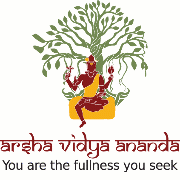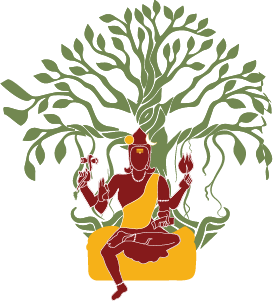Stotram Chanting

To be able to pray is a huge privilege. And all of us (irrespective of our gender, class, nationality differences) have been blessed with this privilege to pray.
A prayer is centred on a self conscious and self-judging person relating to an altar. The mode employed by the person praying is never the same – it differs from person to person. Even for a given person it differs from time to time. A prayer can be a simple mental or oral chant or a strict elaborate vedic ritual.
There are three different forms of karma, action, in prayer: kāyikam, physical, vācika, oral and mānasam, mental. Performing a ritual is a physical form of prayer. Singing praises of Bhagavān is an oral form of a prayer while chanting a mantra silently is a mental prayer.
Prayer is one hundred percent an expression of the free will, and it comes from maturity. That maturity is the understanding from the Veda which is a means of knowledge, that the prayer, which is an action, a karma, has an effect. (Each and every action has an effect).
The understanding of the mature person is that, an act of prayer is necessary to take into account the adrṣta, the hidden variables which one has no control over.
One of the many ways of praying is an Oral Prayer (vācikam karma).
The best way to do an oral prayer is either by :
Doing Japa(repetitive chanting of a mantra) or
Chanting Stotram-s while performing the kāyikam (ritual) prayer or
Chanting Stotram-s on their own.
A lot of adrṣta punya phala (invisible credit) is gained while chanting a Stotram.
Many of the Stotras are sung and are tuned to music. The music along with the rhythm, apart from aiding memorisation, enhances the bhava (the emotional connect) of the chant. It adds to the mood, to the meaning of the stotram and thus to the overall experience of connection with Iśvara.
The act of praying is an involvement of both the mind and the heart. Music helps to calm down and relax the mind. And the harmony further helps in a complete absorption of the mind. When both the mind and the heart connect with Iśvara, prayer happens. The mind connects through the words and their meaning, while an open and sincere heart easily connects through the bhava conveyed by the musical notes (svara-s) along with the words. Once the heart connects, it brings out the devotee, the bhakta in the person.
Bhagavan Krsna says in the Bhagavad Gita (9.29), “ये भजंति तु माम् भक्त्या मयि ते तेषु चाप्यहम।Those who seek Me with devotion exist in Me and I exist in them.”
Thus, Bhagavan resides in the heart of a bhakta, devotee. In this state of fullness, a complete ‘laya’ (absorption) happens and a state of experiential Oneness with Iśvara is experienced.
As of 2022, 50 students have learnt many of the stotrams
Details of the course:
The chanting course can be taken independently of the Vedanta courses or can be undertaken alongside the Vedanta courses.
Although most of the Stotram-s are in Sanskrit, knowledge of Sanskrit is not a prerequisite to learn and chant any Stotram. The Stotram-s can be easily picked up by anyone with proper guidance.
-Classes would be online and would be scheduled as per convenience.
-A typical class would comprise of a minimum of 2 students and a maximum of 3 students, ensuring exclusive attention.
-Each class would be based on the Stotram to be learnt.
-An initial introduction to Sanskrit syllables and sounds would be done so as to get familiarised with the language.
-Depending on the fluency of the students, a few easy Stotram-s would be taught in the beginning followed by more complex ones.
-Each session would be of an hour.
-Sessions will be held once in a week.
-Days and timings of the class would be decided based on the convenience of the students and the teacher.
-PDFs of the Stotram-s would be provided in both Sanskrit with an English transliteration.
-Recordings of the Shlokas done in a session would be provided post each session.
-The number of sessions required to complete learning a Stotram would depend on the ability of the students and the length of the Stotram.
For students residing in India, the contribution would be INR 1500/- for 5 sessions (INR 300/- per session).
For Indians living abroad the contribution would be INR 2000 /- for 5 sessions (INR 400 /-per session) and
For foreigners living outside India, the contribution would be USD 60 for 5 sessions (USD 12/- per session)
-Payment for every set of 5 sessions would have to be done in advance. Sessions would begin only post the payment is received.
-Sessions would be held over Google Hangouts, which can be accessed on the computer or even on the mobile phone.
To know about the teacher and the feedback of the students who have benefitted from the stotram chanting, please click here https://www.discoveratma.com/teachers/
For more details contact: sonali@discoveratma.com or contact on whatsapp no. +91 9823035333

CHANTING COURSES:
● Devaarpanam I : Learn 7 stotram-s (ashtakam-s/panchakam-s) to be chanted as daily prayers for the 7 days of the week. Stotram-s for Ganesha, Shiva, Vishnu, Devi, Guru, Hanuman, Surya (Navagraha)
● Devaarpanam II : Learn to chant longer stotram-s such as Mahishasuramardini Stotram, Ganga Stotram, Rama Raksha Stotram, Aditya Hrydayam, Shiva Tandava Stotram and more.
● Devaarpanam III : Learn to chant the VisnuSahasranama, LalitaSahasranama and the Dakshinamurty Stotram-s.
● Krsnaarpanam : Learn to chant the Bhagavad Gita
● Vedaarpanam : Introduction to Vedic Chanting – Shanti Mantras, Ganapati Atharvasheersham (with emphasis on svara-s, matra and balam)
(Introduction to Sanskrit sounds for those who are not familiar. Students will be accepted into a course post listening to their chanting.)
COURSE HIGHLIGHTS:
One to one learning (maximum 2 students in a class), convenient days and time, emphasis on accurate and alert pronunciation, review and revisions of the stotram-s learnt, participation in regular group chanting (during Navaratri, Ekadashi, Pournami)
Additionally, one can also learn:
Aartis and Prayers:
Gaṇapati, Devi, Shankara, Krsṇa, Pasayadaan (by Sant Jnaneshwar)
Manāche Shlok (by Swami Ramdas in Marathi)
Mantrapushpanjali
Music and Songs:
Bhajans, Abhangas (by Tukaram, Namdev, Jnaneshwar), Nāmasmarana chants, Kirtans, Basics of Hindustani Classical Music 2022
To listen to more stotrams click HERE






